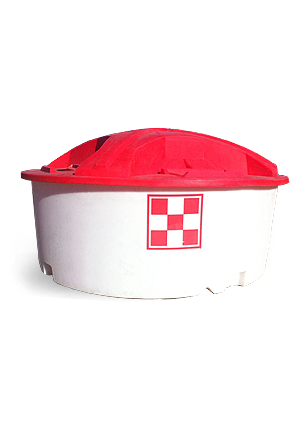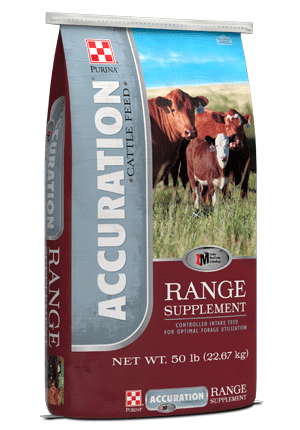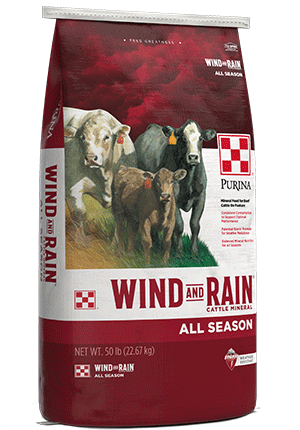
Cavender Ranches: A Legacy of Excellence
Management : Cow & Calf
Management : Replacement
Nutrition : Supplements

If you’re familiar with the Cavender name, it might be because of the Cavender’s Western Outfitter and Boot City stores found nationwide. The Cavender family’s cattle ranching roots are evident when you walk into a store and see black and white photos from their original family ranches near Albany, Texas and Idabel, Oklahoma.
Since 1990, Cavender Ranches has been raising Brangus cattle near Tyler, Texas, after acquiring a herd through a dispersal sale.
“We like Brangus cattle,” says Joe Cavender, owner of Cavender Ranches. “The Brangus mother cow is the queen of the South. She can go anywhere, up through the Midwest, all from the Southern states, coast to coast.”
For 14 years, Cavender Ranches focused on raising commercial Brangus cattle before making strides toward seedstock production. Their first purebred bull and commercial female sale was hosted in 2005.
“Our vision is to have lots of capacity and volume in a moderate package and still maintain bone,” says Cavender of the type of cattle he aims to raise. “In the cattle business, uniformity is where you want to be. Part of our goal is to get better, but we also want to help all of our customers get better.”
“As we grow and get more educated, we’re trying to raise cattle for all aspects in all phases of the country,” says Dustin Kennedy, registered herd manager at Cavender Ranches. “We’re looking to still raise an animal that could perform in the show ring and a functional cow that, somewhere along the lines, can still perform out in the real world.”
For the Brangus genetics, there has always been a focus on heat tolerance and raising females that can perform in the South. They’ve also worked to clean up any sheath issues in bulls so they can make it further north or west, where temperatures and terrain can be challenging while keeping the classic Brangus characteristics.
Cavender Ranches has continued to maintain a commercial Brangus herd, too.
“Our commercial herd grew to the size that we were having two commercial sales a year, selling 500 to 600 head of pairs and heavy breds at each one of these sales,” says Justin Matejka, general manager of Cavender Ranches.
Cavender says it has been a process, and they continue to strive for carcass merit in their herd.
“We think our steers can compete with about any breed no matter what yardstick you use to measure it,” says Cavender. “We still think today that carcass value and what’s under the hide is important.”
Buying calves back from customers who utilize their genetics isn’t uncommon now with the years of feedlot performance.
“We believe that our genetics will carry through the feedyard if we purchase those steers, and we’ll get a premium on them,” says Matejka. “We like to always say we’re raising bulls for the commercial cattlemen, because, at the end of the day, that’s what we are.”
One person can look after the 500 bulls Cavender Ranches develop yearly by feeding Purina® Accuration® NB Cattle Limiters. Also, bulls will receive Purina® Accuration® Sale Prep about a month from sale day.
“We don’t have to worry about a commodity barn bringing commodities in, mixing rations,” says Doug Hawkins, Ph.D., cattle nutritionist with Purina Animal Nutrition in Texas. “Less vehicle equipment costs and manufacturing costs. Just a lot less labor using our Purina® Accuration® program.”
The move to Purina® Accuration® also benefits the conditioning of the bulls.
“One of the great things about it is that you know exactly what the bulls will do on this feed,” says Mark Cowan, marketing and customer service at Cavender Ranches. “There’s not a better way to develop bulls, with their longevity in mind, than on Purina® feed.”
“We don’t see the ups and downs in cattle,” says Matejka. “They stay in consistent body condition, which we really like. We really think it’s helped support our conception rates.”
All of the females are fed Purina® Accuration® Hi-Fat liquid year-round.
“We researched a little bit and talked to Purina and decided to try the liquid feed that we’re using now. It’s a labor saver for sure,” adds Matejka.
The Intake Modifying Technology® included in Purina® Accuration® that encourages snack eating has been beneficial, particularly when considering the ups and downs Cavender Ranches has seen in forage production during years of drought.
“I know with this product we can put it out, and it’s safe and the cattle are going to eat what they need to eat. When they don’t need it, they’re going to walk away,” says Kennedy.
To provide balanced nutrition while on pasture, Purina® Wind and Rain® mineral is fed year-round throughout the herds.
“Mineral’s probably one of the most important things to me,” says Kennedy. “The Purina® Wind and Rain® mineral has been very helpful for us. It gives us everything that we’re looking for right now.”
Watch Cavender Ranches’ full story on their The American Rancher episode.
Does your cattle nutrition program stack up? Find out with a Proof Pays trial.
Since 1990, Cavender Ranches has been raising Brangus cattle near Tyler, Texas, after acquiring a herd through a dispersal sale.
“We like Brangus cattle,” says Joe Cavender, owner of Cavender Ranches. “The Brangus mother cow is the queen of the South. She can go anywhere, up through the Midwest, all from the Southern states, coast to coast.”
For 14 years, Cavender Ranches focused on raising commercial Brangus cattle before making strides toward seedstock production. Their first purebred bull and commercial female sale was hosted in 2005.
“Our vision is to have lots of capacity and volume in a moderate package and still maintain bone,” says Cavender of the type of cattle he aims to raise. “In the cattle business, uniformity is where you want to be. Part of our goal is to get better, but we also want to help all of our customers get better.”
Growing the ranch
Today, Cavender Ranches has grown to include 600 registered Brangus females and 150 registered Charolais females, and they place 1,000 embryos per year to help keep up with demand for their genetics.“As we grow and get more educated, we’re trying to raise cattle for all aspects in all phases of the country,” says Dustin Kennedy, registered herd manager at Cavender Ranches. “We’re looking to still raise an animal that could perform in the show ring and a functional cow that, somewhere along the lines, can still perform out in the real world.”
For the Brangus genetics, there has always been a focus on heat tolerance and raising females that can perform in the South. They’ve also worked to clean up any sheath issues in bulls so they can make it further north or west, where temperatures and terrain can be challenging while keeping the classic Brangus characteristics.
Cavender Ranches has continued to maintain a commercial Brangus herd, too.
“Our commercial herd grew to the size that we were having two commercial sales a year, selling 500 to 600 head of pairs and heavy breds at each one of these sales,” says Justin Matejka, general manager of Cavender Ranches.
Proven feedlot performance
Starting out, Cavender Ranches didn’t have much data on how their cattle performed until they began retaining ownership at the feedyard 25 years ago.Cavender says it has been a process, and they continue to strive for carcass merit in their herd.
“We think our steers can compete with about any breed no matter what yardstick you use to measure it,” says Cavender. “We still think today that carcass value and what’s under the hide is important.”
Buying calves back from customers who utilize their genetics isn’t uncommon now with the years of feedlot performance.
“We believe that our genetics will carry through the feedyard if we purchase those steers, and we’ll get a premium on them,” says Matejka. “We like to always say we’re raising bulls for the commercial cattlemen, because, at the end of the day, that’s what we are.”
Labor-saving nutrition
Several years ago, they faced the challenge of finding enough labor to help feed all the cattle they developed on pasture. There were also issues with the wear and tear on equipment covering so many miles.One person can look after the 500 bulls Cavender Ranches develop yearly by feeding Purina® Accuration® NB Cattle Limiters. Also, bulls will receive Purina® Accuration® Sale Prep about a month from sale day.
“We don’t have to worry about a commodity barn bringing commodities in, mixing rations,” says Doug Hawkins, Ph.D., cattle nutritionist with Purina Animal Nutrition in Texas. “Less vehicle equipment costs and manufacturing costs. Just a lot less labor using our Purina® Accuration® program.”
The move to Purina® Accuration® also benefits the conditioning of the bulls.
“One of the great things about it is that you know exactly what the bulls will do on this feed,” says Mark Cowan, marketing and customer service at Cavender Ranches. “There’s not a better way to develop bulls, with their longevity in mind, than on Purina® feed.”
Condition across the herd
Keeping females in ideal body condition is a must. That’s another reason Purina® products are fed across the herd.“We don’t see the ups and downs in cattle,” says Matejka. “They stay in consistent body condition, which we really like. We really think it’s helped support our conception rates.”
All of the females are fed Purina® Accuration® Hi-Fat liquid year-round.
“We researched a little bit and talked to Purina and decided to try the liquid feed that we’re using now. It’s a labor saver for sure,” adds Matejka.
The Intake Modifying Technology® included in Purina® Accuration® that encourages snack eating has been beneficial, particularly when considering the ups and downs Cavender Ranches has seen in forage production during years of drought.
“I know with this product we can put it out, and it’s safe and the cattle are going to eat what they need to eat. When they don’t need it, they’re going to walk away,” says Kennedy.
To provide balanced nutrition while on pasture, Purina® Wind and Rain® mineral is fed year-round throughout the herds.
“Mineral’s probably one of the most important things to me,” says Kennedy. “The Purina® Wind and Rain® mineral has been very helpful for us. It gives us everything that we’re looking for right now.”
Watch Cavender Ranches’ full story on their The American Rancher episode.
Does your cattle nutrition program stack up? Find out with a Proof Pays trial.




